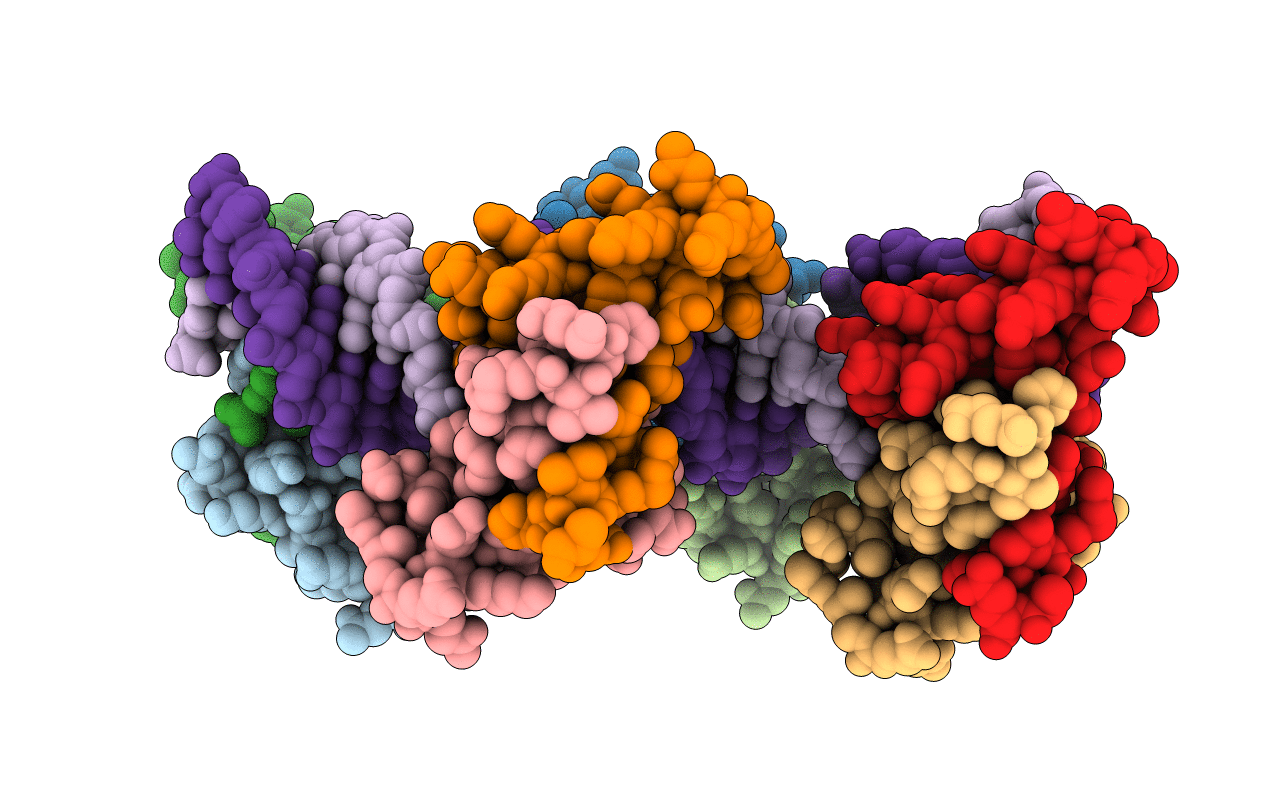
Deposition Date
2014-06-24
Release Date
2014-09-24
Last Version Date
2024-02-28
Entry Detail
PDB ID:
4QPQ
Keywords:
Title:
Mechanistic basis of plasmid-specific DNA binding of the F plasmid regulatory protein, TraM
Biological Source:
Source Organism:
Escherichia coli (Taxon ID: 83333)
(Taxon ID: )
(Taxon ID: )
Host Organism:
Method Details:
Experimental Method:
Resolution:
3.11 Å
R-Value Free:
0.23
R-Value Work:
0.22
R-Value Observed:
0.22
Space Group:
P 43 21 2


